#Folkwang-Universität der Künste
Explore tagged Tumblr posts
Photo
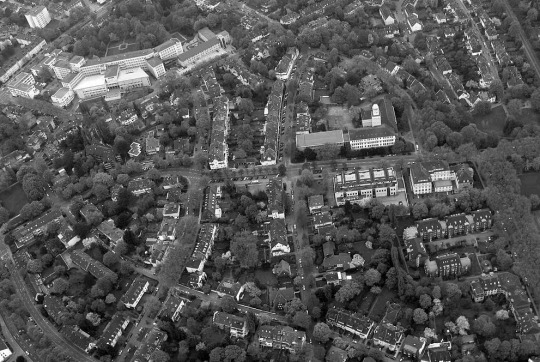
0 notes
Text
Und
- die Preisverleihung an die palästinensische Autorin Adania Shibli wurde auf der Frankfurter Buchmesse verschoben.
- die geplante Ausstellung über Prostitution in Südafrika der jüdisch-südafrikanischen Künstlerin Candice Breitz in der Modernen Galerie Saarbrücken „in Anbetracht der medialen Berichterstattung über die Künstlerin“ abgesagt.
- das Ausstellungsprojekt über Afrofuturismus des haitianischen Kurators Anaïs Duplan am Essener Museum Folkwang wurde gestrichen.
- die Verleihung des Hannah-Arendt-Preises an die jüdisch-amerikanische Journalistin Masha Gessen wurde skandalisiert, der Preis wurde zwar verliehen, jedoch zogen sich Mitveranstalter wie die Heinrich-Böll-Stiftung und der Bremer Senat zurück.
- das MPI trennt sich vom libanesisch-australischen Wissenschaftler Ghassan Hage.
- Laurie Anderson tritt die Pina-Bausch-Professur an der Folkwang Universität der Künste in Essen nicht an.
1 note
·
View note
Text
0 notes
Text
Publikum im Theater Duisburg feierte Chor und Orchester bei Festkonzert: 30 Jahre Universitätschor
Wahrlich keine bösen Geister Von Petra Grünendahl
Schauspieler Linus Schutz als Zauberlehrling. Foto: Petra Grünendahl.
„Die Geister, die ich rief, die werd’ ich nun nicht los“, verzwiefelte Sprecher Linus Schütz. Goethes Ballade vom Zauberlehrling hatte ihren Reiz, auch wenn man sie schon lange nicht mehr auswendig kann: ein Deja-vu, das doch die eine oder andere Zeile ins Gedächtnis rief. Den…
View On WordPress
#Andrew Nolen#Felix Mendelssohn Bartholdy#Festkonzert#Folkwang-Universität der Künste#Hermann Kruse#Jerry Goldsmith#Johann Wolfgang von Goethe Der Zauberlehrling#Konzertchor Unna#Linus Schütz#Michael Siemon#Modest Mussorgski#Paul Duikas#Philharmonie Essen#Prof. Oliver Leo Schmidt#Rafael Bruck#Theater Duisburg#Universität Duisburg-Essen UDE#Universitäts-Rektor Prof. Dr. Ulrich Radtke#Universitätschor Essen#Universitätsorchester Duisburg-Essen#Von Hexen Geistern und Dämonen#Walpurgisnacht
0 notes
Photo

Ab sofort online, die Podcast-Episode mit Steffen Siegel, Professor für Theorie und Geschichte der Fotografie an der Folkwang Universität der Künste, Essen @folkwang_uni. Was sich sagen lässt: Es ist ein sehr entspanntes Gespräch über das Fotografie-Studium und die Veränderungen der Fotografie geworden, von der analogen Technik bis zum mathematisch errechneten Abbild. Dass es größtenteils auch um den Nutzen und die Wirkweisen fotografischer Bilder geht, ist selbsterklärend, schließlich macht gerade das einen großen Teil des Studiums von Theorie und Geschichte der Fotografie aus. Wenn Steffen Siegel dann auch noch kurz von zwei Gänsehaut-Momenten erzählt, ist vielleicht alles gesagt. Das Fotografische war dabei abwesend. Zu Hören auf allen gängigen Podcastplattformen. Foto: @a_d_r_i_a_n_s_a_u_e_r #fotografiepodcast #dieMotive #steffensiegel #fototheorie #fotogeschichte #fotografiegeschichte #fotopodcast #redenüberbilder #photographystudiesandresearch #folkwanguniversitätderkünste #folkwang (hier: Quartier Nord) https://www.instagram.com/p/Cm6EThzsw26/?igshid=NGJjMDIxMWI=
#fotografiepodcast#diemotive#steffensiegel#fototheorie#fotogeschichte#fotografiegeschichte#fotopodcast#redenüberbilder#photographystudiesandresearch#folkwanguniversitätderkünste#folkwang
0 notes
Video
instagram
I made a video!! See it on YouTube 'karlscott, still small voice' - filmed while creating i ages using a home made pin hole camera. My friend , @k.thleen_k created the whole session at her uni (Folkwang Universität Der Künste) in Essen, Germany on the 15th feb 2019. She opened the camera, I played a whole song, she closed the camera! The image is at the end of the video - and this is the song! This was an impromptu video, we went primarily to make still images but then we decided last minute to video it so we didn't have the correct cameras or microphones - so please forgive the quality! #folkwanguniversitätderkünste #pinholephotography #cameraobscura #diymusic #diymusician #singersongwriter #moderndaytroubadour #travelingmusician #diysingersongwriter #guitar https://www.instagram.com/p/BuwaSThoJF8/?utm_source=ig_tumblr_share&igshid=1y1tm07nrcqq7
#folkwanguniversitätderkünste#pinholephotography#cameraobscura#diymusic#diymusician#singersongwriter#moderndaytroubadour#travelingmusician#diysingersongwriter#guitar
1 note
·
View note
Video
youtube
Vorstellung der Hauptrolle von Anastasia
Judith Caspari heist die Hauptdarstellerin des Musicals Anastasia. Die 24- jährige Absolventin der Folkwang Universität der Künste in Essen konnte schon mit der Hauptrolle der Maria in der "West Side Story" überzeugen. Wir waren bei der Vorstellung im Marmorsaal in Stuttgart dabei:
8 notes
·
View notes
Photo

LENAH FLAIG Studium zeitgenössischer Bühnentanz / Folkwang Universität der Künste freischaffende Performerin seit 2012 / arbeitet an der Schnittstelle von bildender Kunst, Musik, Tanz und Performance. Seit September 2020 betreibt sie nebenberuflich mit Nadine Kiala den Kunsthafen in Köln, eine Ausstellungshalle mit Schwerpunkt bildender Kunst. instagram.com/lenahflaig Kunsthafen.com
0 notes
Photo

Folkwang Universität der Künste Essen (2006)
✑
SANAA
100 notes
·
View notes
Text

© Foto: 3D-Google-Earth-Model#2, UDK Berlin, 2018“ VG-Bildkunst, Bonn, 2018
Ringvorlesung // MITTWOCH // 18.12.19 17:00 Uhr // Aula FB Design# /
Achim Mohné
Er arbeitet mit zeitbasierten Medien wie Computer, Internet und Sound im Bereich der Installation, Performance und öffentlichen Intervention. An der Schnittstelle von Apparat, Interface, Software, Handlung und Intermedialität werden die Medien im Hinblick auf ihre Beschaffenheit und Funktion hinterfragt. Als fortlaufenden Prozess der Befragung von technisch erzeugten Bildern nutzt er u.a. Drohnen, unterläuft vorhandene Überwachungssysteme oder besetzt parasitär kommerzielle Bilddistributionssysteme.
2007 gründet er gemeinsam mit Uta Kopp das Kommunikations-Projekt REMOTEWORDS, das großformatige Botschaften auf Dächer installiert. Die „fernen Worte“ werden durch Google Earth und Apple Maps Satelliten verbreitet. Im Sinne eines Detournements, wird die “Überwachung“ somit zum Sender künstlerischer Botschaften zweckentfremdet. Die Werkreihe MEGAPIXEL sind großflächige, abstrakte Bodenarbeiten aus mehr als 5000 Pfastersteinen, die als analoges Pixel-Mosaik digitale Bildstrukturen nachempfinden, welche erst aus der Fernsicht (mit Hilfe von Satelitenaufnahmen) zu erkennen sind. Mohnés aktuell laufende Projekte untersuchen die Sicht virtueller Globen auf die urbane Landschaft und auf Kunst im öffentlichen Raum. Mittels eines eigens entwickelten Verfahrens, dass die Daten von Google Earth „zurückzuerobern sucht“, wird die Vermessung durch Fotogrammetrie mit fotografischen Mitteln übereingebracht. Die Idiosynkrasie dieser dreidimensionalen Fotos transportiert nicht nur das Medium Google Earth, sondern verdeutlicht auch dessen suggestiven Charakter.
Achim Mohné studierte an der Folkwang Universität der Künste, Essen und anschließend an der Kunsthochschule für Medien in Köln mit einem Postgraduierten Abschluss bei Jürgen Klauke und Valie Export. Es folgten Lehraufträge und Gastprofessuren an der Kunstakademie Münster; Folkwang Universität der Künste,
0 notes
Text
Neue Lehrkräfte an der Moerser Musikschule
Neue Lehrkräfte an der Moerser Musikschule Moers. (pst) Über zwei neue Lehrkräfte können sich die Schülerinnen und Schüler der Moerser Musikschule freuen. Nicole Heckrath Accurso (Blockflöte) und Beate Tuisel (Akkordeon) sind dort gestartet. „Es ist gar nicht so leicht, gute und nette Leute für die Arbeit an der Musikschule zu bekommen. Der Fachkräftemangel ist auch hier angekommen“, bedauert Musikschulleiter Georg Kresimon. Er begrüßte die neuen Kolleginnen und freute sich über das Fachwissen und die pädagogischen Erfahrungen, die beide Frauen mitbringen. Was sie eint, ist nicht nur die Liebe zu ihrem jeweiligen Instrument, sondern auch die Erfahrungen in der Lehrtätigkeit mit Kindern und Erwachsenen. Passend dazu hat Beate Tuisel zusätzlich eine Ausbildung als Musikgeragogin. Dabei geht es darum, ältere Menschen (wieder) an die Musik heranzuführen. Dies kann auch in einem Akkordeonorchester geschehen, das neue Teilnehmende gerne in seine Reihen aufnimmt. Breites Flötenspektrum Nicole Heckrath Accurso ist in Brasilien geboren und hat dort ihren Bachelor-Abschluss im Hauptfach Flöte absolviert. Seit 2003 lebt sie in Deutschland. An der Hochschule für Musik und Darstellende Kunst Frankfurt hat sie ihren Master gemacht. In den letzten fünf Jahren war sie an der Musikschule in Singen (Baden-Württemberg) tätig. In Bezug auf ihr Instrument möchte sie Vorurteile abbauen: „Es wird von Kindern häufig für den Anfang genutzt, aber es hat viele Möglichkeiten der Entwicklung. Zudem gibt es ein großes Repertoire.“ Ihre Sternstunde hatte die Blockflöte im Barock. „Aber heutzutage erlebt sie eine Renaissance durch zeitgenössische oder elektronische Musik.“ Auch im Jazz ist die Blockflöte stark vertreten. „Diese Bandbreite versuche ich zu vermitteln.“ In der Regel fangen die Schülerinnen und Schülern mit einfachen Stücken auf der Sopranblockflöte an. Wenn sie diese beherrschen, ist der Wechsel auf die Altblockflöte möglich. „Viele Schüler haben das Ziel, alle Flöten spielen zu können.“ Auch der Klang der Instrumente kann sehr unterschiedlich sein. „In der zeitgenössischen Musik kann er hart und trocken sein, aber manchmal passt auch die brasilianische Bezeichnung flauta doce (süße Flöte).“ Akkordeon singt Die Akkordeonistin Beate Tuisel ist als Kind zu ‚ihrem‘ Instrument gelangt. Eine damalige Schulfreundin hatte ein kleines rotes Akkordeon. „Darin habe ich mich sofort verliebt. Und ich fand den Klang total schön.“ Nach dem Unterricht als Schülerin und dem Abitur hat sie an der Folkwang Universität der Künste in Essen bei der bekannten Musikerin und Professorin Mie Miki studiert. Dort ist sie mit der neuen Akkordeonmusik in Berührung gekommen. Auch das Instrument selbst ist recht jung. Erst 1822 gab es einen Vorläufer. Streng genommen gibt es zwei Arten: Zum einen das Instrument, das besonders durch Volksmusik bekannt ist, und zum anderen ein entwickeltes Akkordeon. Bei diesem Melodiebass-Instrument sind die Akkorde auf der linken Seite nicht durch Tasten vorgegeben, sondern es können wie beim Klavier einzelne Töne gespielt werden. Vor allem barocke Stücke, aber auch neue Musik wird damit gespielt. Besonders anziehend findet Tuisel an ihrem Instrument den Klang: „Der Klang lebt. So ähnlich wie bei einer Flöte oder einem Blasinstrument produziere ich ihn beim Spielen -. man singt auf dem Akkordeon.“ Bildzeile: Musikschulleiter Georg Kresimon (r.) freut sich über die Neuzugänge Nicole Heckrath Accurso und Beate Tuisel (v.l.). (Foto: pst) Infobox: Weitere Informationen zu den Unterrichtsangeboten gibt es auf der Internetseite der Moerser Musikschule www.moerser-musikschule.de und telefonisch unter 0 28 41 / 1333. Da Akkordeons meist recht teuer sind, stellt die Musikschule Leihinstrumente in verschiedenen Größen zur Verfügung. Read the full article
0 notes
Photo

Folkwang Universit (at Bibliothek der Folkwang Universität der Künste) https://www.instagram.com/p/B3qeBYPnweu/?igshid=1sx3mam7hzr4
0 notes
Text
Festkonzert der Universität Duisburg-Essen: 30 Jahre Universitätschor
Von der Walpurgisnacht über den Zauberlehrling, der die Geister rief, bis hin zur dämonischen Filmmusik Von Petra Grünendahl
Stellten das Festkonzert der Universität Duisburg-Essen im Foyer des Theaters vor (v. l.): Karoline Hoell, Leiterin der Kulturbetriebe Duisburg, Orchester-Dirigent Oliver Leo Schmidt, Prof. Dr. Eberhard Passarge, Musikbeauftragter der UDE, und Swen Wagner, Sprecher des…
View On WordPress
#Andrew Nolen#Felix Mendelssohn Bartholdy#Festkonzert#Folkwang-Universität der Künste#Hermann Kruse#Jerry Goldsmith#Johann Wolfgang von Goethe Der Zauberlehrling#Karoline Hoell#Konzertchor Unna#Linus Schütz#Michael Siemon#Modest Mussorgski#Paul Duikas#Philharmonie Essen#Prof. Oliver Leo Schmidt#Rafael Bruck#Swen Wagner#Theater Duisburg#Universität Duisburg-Essen UDE#Universitätschor Essen#Universitätsorchester Duisburg-Essen#Von Hexen Geistern und Dämonen#Walpurgisnacht
0 notes
Text
Peter Groom, actor, choreographer and drag artist – Dietrich: Live in London
Peter Groom, who comes from Newcastle upon Tyne, graduated from the Guildford School of Acting in 2013, and has since worked both in the UK and internationally. His dance credits include One Side to the Other for Akram Khan Company, and his theatre work includes Romeo and Juliet and Adventures of Sherlock Holmes at the Aquila Theatre in New York. He was artist in residence at Battersea Arts Centre in London in 2014.
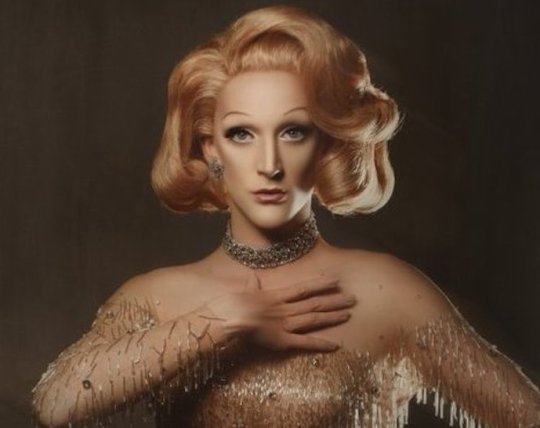
In January 2018 Peter launched his multi award-winning solo show, Dietrich: Natural Duty – co-written with and directed by Oliver Gully – which documents screen icon Marlene Dietrich’s life during the Second World War. It premiered at the Vaults in London before touring internationally, taking the Edinburgh Festival Fringe and Adelaide Fringe by storm. He has followed this with a cabaret, Dietrich: Live in London – accompanied by his MD Jimmy Jewell at the piano – which sold out at London’s Crazy Coqs, Live at Zédel in July and will return to the venue on 1 October 2019. Peter chats to Liz Arratoon.
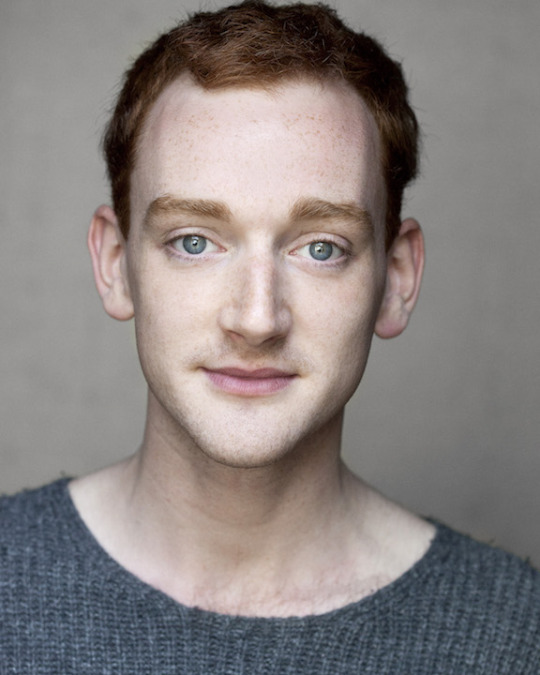
The Widow Stanton: Did you always want to be onstage? Peter Groom: Yes, yes I did. I joined a youth theatre group in Newcastle when I was nine or ten and did plays and musicals with them until I was 17.
Was there anyone in your family in showbiz who inspired you? Er, no. [Laughs] My mum worked for the NHS and my dad used to work for Coca-Cola, but my grandma was very funny and very musical. She sang a lot but just with us as kids, you know, nothing… nobody performed professionally or anything.
So you don’t know where this urge came from? No, it just always seemed there, really. I remember the first time, it was in nursery, pre-school, I played Santa and I had to come down a chimney and pop out at the bottom. When Santa Got Stuck Up the Chimney, that was the song. I remember really clearly the room, and appearing from the chimney and everybody looking at me. And I remember where the lights were… that’s a really clear thing. I remember them all laughing.
You’ve appeared as a dancer; did your course at Guildford cover dance? We took ballet, jazz and contemporary, but before I went there I was really more interested in dance. I used to dance when I was a kid and then I went to Germany and was part of a show there called Sommertanz. That was with dancers from Pina Bausch Company. I’d never seen her work, I didn’t know who she was, and working with that company blew my mind because the dance I’d done up to then was all technique-based; a lot of ballet, and then her dancers were all about your expression and what you feel and what interests you and what you’re passionate about.

Suddenly that sparked more of an expression side and I thought, ‘Well, maybe dance isn’t right for me, maybe acting is much better’. So that’s why I trained at a drama school. But it’s funny, you know, the minute I left drama school I thought, ‘Oh, I want to dance again’. So I did and I went off and did a show with Akram Khan for a little bit, and then with some other companies, and I still make work that’s very dance based as a choreographer that I don’t perform in. It’s usually quite devised and working with a lot of text; usually half dancers and half actors.
You seem to have got international work very soon after graduating… I’ve been really lucky that I haven’t really been out of work a lot since I graduated, which is a really lovely position to be in. I stayed around In London for a few months after I graduated and then… I really love Germany. I lived there when I was 17 and when I graduated I thought, ‘I really wanna go there again’. I feel very at home there. So I went back to the school where I’d trained with dancers from the Pina Bausch Company – Folkwang Universität der Künste in Essen-Werden. I had a friend there and she said: “Oh well, just come and take class here in the mornings.” So I did, and an audition came up in Berlin. I went and I got the job in the show MEAT at Schaubühne, so I stayed there for about a year. It was wonderful. I loved it.
Again you were artist in residence at BAC quite soon after that… Yes, I came back from Berlin and it came up… you could live there.
Oh yes, I’ve been on a backstage tour and seen the rooms. It’s marvellous! It’s amazing! They give you this space, and they give you a weekly budget to eat, and then you just make work all the time. Its wonderful; it’s like taking all the pressure off. You have time. I think I was there six months and you have time to let things develop and let you thoughts sit.

I would call your Marlene shows ‘female impersonation’ rather than drag, but how did you get into drag? It had been floating around for a while, I think. A few people had said: “Oh, you should really do it, because we think you’d be adept at it.” And then, I’m trying to remember, the first time was at BAC. A friend of mine had had a really bad year and he had a big Hallowe’en party and said: “Everybody has to come really full-out. Everybody has to get their great costumes on.” And I like Marlene Dietrich anyway, I have for years, and he said: “Oh, you come as Marlene because you’ll like that.” So I did! There were some photos, one got put on Facebook and then a woman called Tanith Lindon, who was the events co-ordinator at BAC saw it and said: “Oh, you look great! Come and host a New Year’s Eve party at BAC.” So I said, ‘Yes’.
And that was the start of it? That was the start of it, yeah, but it was little bits of cabaret. I’d never thought about making a show.
How had Marlene first come to your attention? I first heard her name through Vogue by Madonna; there’s that bit at the end where she raps all the Hollywood stars names, Garbo and Hepburn… and I went and looked them all up [laughs] and it was Marlene’s image that was really fascinating to me because she was cold… and distant… and aloof. This person that really didn’t coo… well, she wasn’t sweet or cute in any way. And as a teenager that really appealed to me.
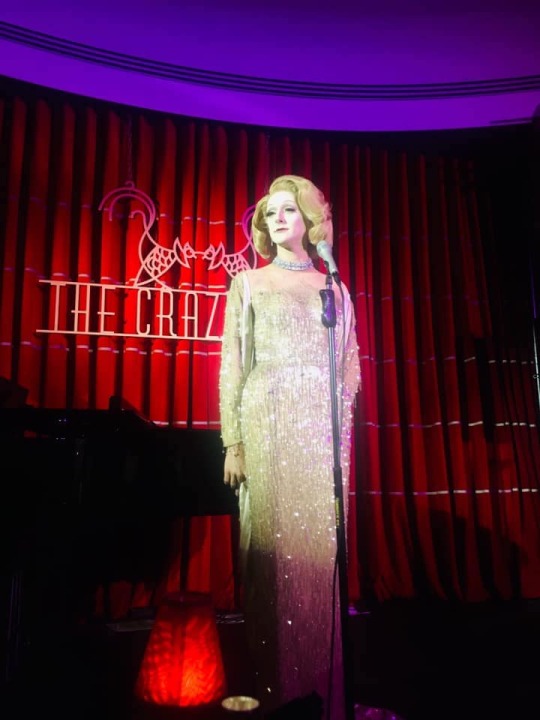
When you were creating the show, did you study her mannerisms by watching her films? Well, I’ve seen all her films and read about 17… 18 books on her, newspaper articles and things like that, and then I think you have to forget all that and try to embody her without copying her. I never looked at footage and they tried to imitate her. I sort of tried to find where all these mannerisms came from. I mean, she just had the spine of a Prussian soldier. Everything pulled up, everything is tight, taut. Maybe towards the end that’s also because she was pinning her face in place so it looked younger, but it’s all these things that she has in her that are from her life experience. I was interested in that; both the illusion and what was behind it.

I’m really hot on costumes and must compliment you on your gown. Is it based on her famous ‘nude’ dress, designed by Jean Louis? Yes. It was made by a costume designer called Kathleen Nellis. She studied at London College of Fashion and graduated a few years ago. We’ve collaborated for a couple of years now; we have two dresses and a coat. When we first started making the show, before we wrote anything, before we thought what the story would be, the first thing we did was find out if we could make that dress. I feel similar to you, costume’s such a huge thing for me, particularly with that show. In the first two minutes when you see the dress and when you see Marlene, you have to be impressed, you have to go, ‘Oh my gosh, where did you get that?’. Because if you don’t have that you may as well throw the rest out the window. We need to be drawn in and dazzled.
It’s so fabulous! It’s so classy, and, well done, because too many people skimp on costumes. And I like Marlene too much to do that. It is, you know, a lot of beading backstage and a lot of time, but I think, ‘That’s good!’. And in a strange way it really gives you an insight into her. I played Edinburgh for the month last year and by week three, you think, ‘Gosh! Doing drag every day and painting this much and looking after the hair and looking after the dress, it’s a lot of work and it’s not much fun’. You just have to do it; it’s your duty to get it on and deliver the image of illusion every day. And it really took it out of me and I’d get a little bit annoyed sometimes. But then I thought, ‘She did this for 70 years, before she became a recluse’. The amount of perfectionism and will it must have taken to maintain that image is extraordinary. But there’s nothing I do in the dressing room that she didn’t do; probably just as much make-up, just as many support garments.

We haven’t mentioned your wig. Did you have it specially made? Yes, by Jack James Baxter at Wig Chapel. They’re based in Whitechapel.
How long does it take you to put on the make-up and everything? From nothing to everything, about two hours. It’s a long time but it is a lot of layers and stuff because the make-up isn’t exaggerated. It’s not really ‘drag’ make-up. It’s very clean, so it needs to be very clean.
Let’s talk about Dietrich: Live in London… Live in London is based on her Vegas cabaret show, really, and her subsequent cabaret shows around the world. It came about because I really love Zédel; I love that space, it’s so beautiful. They had asked me to come and do Natural Duty there, but Natural Duty, really it’s a play. It has aspects of cabaret in it and there are songs but it’s a story with a narrative that you follow through, and I thought, ‘The space at Zédel is so cabaret, you can get drinks with people serving throughout and that wouldn’t be good for Natural Duty. I don’t think it would work, so I said, ‘I’m not sure’. And they said: “Make something else, maybe make a new cabaret.”
And actually there was loads of things I wanted to do that didn’t fit with Natural Duty, loads of songs… ‘I’d love to do that song but it doesn’t fit’. So I wanted to make an evening that felt glamorous and take that class idea and see if I could make a very… I didn’t know of anyone else who just stands there and sings songs, without any joke, you know, when the drag isn’t a joke. So, yes, I think it’s that. It’s glamorous, it’s fun and it’s the first time I’ve done the tuxedo, which is really exciting.
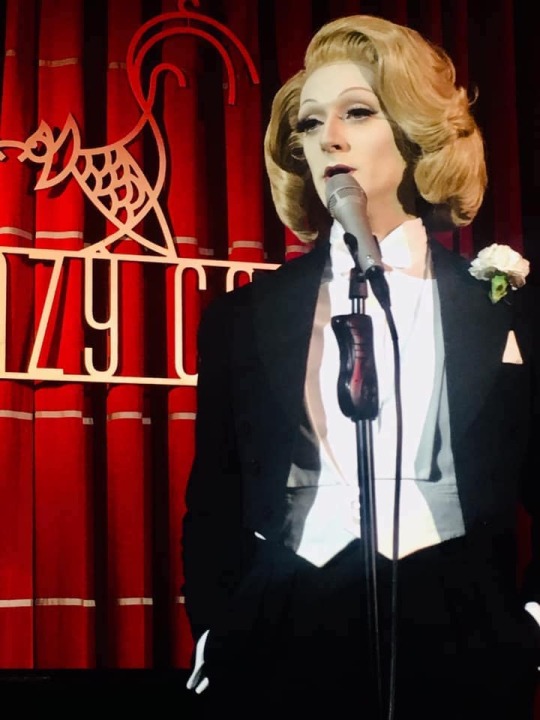
Have you found any footage of those concerts she gave later in life? There’s only her show at the Queen’s Theatre in London that was recorded for television but that’s more of a recital. She doesn’t do the tails, she doesn’t do any of that stuff. There are a few clips… she used to have a kickline at the end of her cabaret show… the girls would come on and do little tuxedo-Fred Astaire kickline, there are clips of news footage of that.
So the songs you sing are the songs she sang in her concerts? Yes, the only one she didn’t that I sing is Top Hat, White Tie and Tails.
And there’s no patter in this one; it’s song, song, song. Is that what she did? She did do that, yeah. Sometimes there’s a little bit of introduction… ‘A song by Charles Trenet’, there’s a little bit of narrative based on her coming to America.
Will you be touring Live in London? Yes, we’ve been asked to perform it at the Sage in Gateshead, which is great. It’s amazing to be asked to play a concert hall like that. And also it’s home for me. That’s going to round off the year.
Is Marlene taking up most of your time or are you managing to fit in other work? No, it mostly Marlene.

So you’ve got to spend those hours getting ready all the time. I like her and to not have the pressure of the narrative that’s in Natural Duty and to just enjoy and sort of play with the audience in London has been really great. I’ve got to say I was really terrified the day of the first Zédel show. I thought everyone would be bored. There’s no story, they’re just gonna… they’re just gonna leave! So I was so thrilled that it was received so well. It was a great night. It’s such a nice energy in that room.
You’ve won loads of awards with Marlene, which stands out? We won Critics’ Choice at the Adelaide Fringe. Marlene was in Adelaide 50 years before we were there, strangely, and her tour manager, Ron Tremaine, who organised her Australian tours, came to see the show. He’s 80-something. He was incredible and stayed with us afterwards and he talked and told us stories about her, showed us photos of them together. That was really extraordinary and very touching. It’s fascinating when you meet people who knew her as a human person and not just the illusion, people who see behind that. He wanted to know how we made the show, and he really loved it, which was really kind.
Is there anything else you’d like to say about her? I guess, back to the drag thing, it’s funny because a lot of people see the show and then they tell me: “Oh, but it’s not a drag show,” which I really like. That was a real aim with Natural Duty; how do you do a drag show that isn’t a joke and isn’t demeaning to the man playing it or the woman who it’s representing? I have a lot of admiration for her and particularly her work for peace in the world. That’s an incredibly timely message now, you know. Everybody has a platform to promote themselves, to promote how good they look or whatever it is. What she managed to do was link that and a stance for peace. If we all did that the world might be a better place.

Peter performs Dietrich: Live in London at the Crazy Coqs, Live at Zédel in London on 1 October, and Dietrich: Live in Gateshead at the Sage on 18 December 2019. He will be touring Dietrich: Natural Duty again in 2020.
Picture credit: V’s Anchor Studio; vintage Marlene holding papers, with thanks to Andrew Davidhazy For tickets to Dietrich: Live in London, click here
And for Dietrich: Live in Gateshead, click here
Peter on Facebook
Twitter: @_petergroom
Follow @TheWidowStanton on Twitter
Read the story behind Andrew Davidhazy’s picture of Marlene, which he took as a schoolboy!
#peter groom#marlene dietrich#showbusiness interview#dietrich: natural duty#dietrich: live in london#cabaret#Crazy Coqs#kathleen nellis#wig chapel#live at zedel#drag artist#battersea arts centre#sage gateshead
0 notes
Photo




Pictures of Fabric, 2019 Abschlussarbeit an der Folkwang Universität der Künste
0 notes